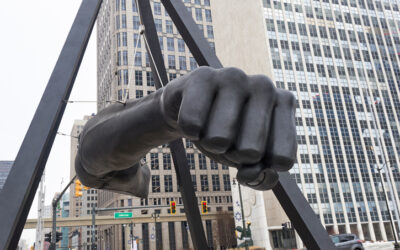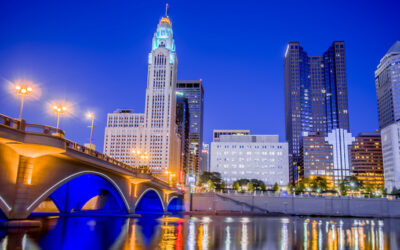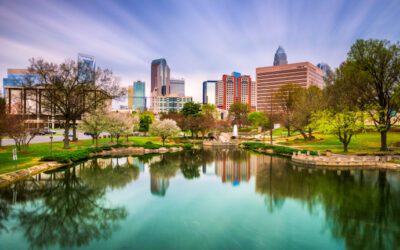Minneapolis has very distinct neighborhoods each with its own flair, style and unique vibe.
Whether you’re looking for a hip-and-happening neighborhood with stylish urban lofts or a quiet neighborhood with single-family homes and a small-town charm, the city offers plenty of opportunity for you to find the right place to call home.
The city is divided into 11 communities, and then each community is divided into small neighborhoods, for a total of 81 neighborhoods. Many stand out for their quality lifestyle and livability.
Many of these areas boast unique shops and dining experiences, strong culture and history, entertainment/music, bars and coffee shops. And don’t forget Minneapolis’ outstanding lakes and park system, which was voted the best in the country.
Of course, narrowing it down to 10 neighborhoods was tough. However, we’ve included some high-profile, can’t-miss communities as well as a couple less-known, but up-and-coming hot spots.
Here are 10 hot neighborhoods to check out:
1. Linden Hills
Awesome night in Linden Hills for #NationalNightOut2017 #NNO pic.twitter.com/5l2QcNcE24
— Jacob Frey (@Jacob_Frey) August 2, 2017
Linden Hills in southwest Minneapolis is an obvious choice with its unique urban village character and charming tree-lined streets. Nestled between Lake Harriet and Lake Calhoun (soon to be renamed Bde Maka Ska, which is the lake’s original Dakota name), it’s surrounded by parks with plenty of walking and biking paths.
You can spend a summer day eating an ice cream cone from Sebastian Joe’s, ride the Como-Harriet Streetcar (a vintage trolley) or check out the Lake Harriet Bandshell, a fifth-generation music venue.
Niche ranks Linden Hills as the Twin Cities’ top neighborhood to live. “Eclectic and wonderful” is how one resident on Niche describes it. “Often referred to as ‘a small town in the city,’ Linden Hills represents eclectic urban living. Folks love to browse the locally owned stores that remind you of the past.”
2. Downtown East
The Gold Medal Park Downtown East #Minneapolis #MN pic.twitter.com/12zaMn5RlW
— Ahab Content (@Ahabcontents) June 21, 2017
What was once a neglected part of Minneapolis with under-utilized surface parking lots, Downtown East is now one of the most sought-after neighborhoods in Minneapolis. Downtown East is an historic mill district where new residential and commercial towers have popped up as well as the massive U.S. Bank Stadium, which is hosting the 2018 Super Bowl.
Downtown East is an extension of the downtown core. It’s also a center for the fine arts, boasting the MacPhil Center for Music, Guthrie Theater and Mill City Museum.
The area offers tons of amenities including new restaurants and shops, many along the Mississippi River waterfront, and light-rail access. It features high-tech lofts, a new Radisson RED hotel and Downtown East Commons—a public space designed as a “calming escape” from city life.
3. Ericsson
Tennis court lesson.
Ericsson, Minneapolis. pic.twitter.com/aFOxQxo4gY— Chris Lautenschläger (@Lautenschlager7) May 10, 2017
Ericsson in southeast Minneapolis is an up-and-coming neighborhood that’s been called a “hidden gem.” Redfin named it one of the “Top 10 Hottest Neighborhoods” in 2016, based on affordability, character and accessibility to stores, coffee shops and downtown Minneapolis. “Character” refers to things like its tree-lined streets and original architecture.
Ericsson’s median home sale price of $238,000 makes it more affordable than other more illustrious neighborhoods. It features cute, little bungalow houses and the architecture is not cookie-cutter, CityPages reports. Ericsson is located between Lake Hiawatha and Minnehaha Falls, offering great outdoor amenities.
4. North Loop
Downtown’s North Loop (or Warehouse District) on the west side of downtown was a bunch of old warehouses transformed into trendy bars, nightclubs, boutiques, galleries, hip restaurants and new housing options. It’s very walkable and especially attractive for young professionals working downtown. If offers a good mix of historic lofts, new residential buildings, and upscale townhomes along the riverfront.
It has a trendy vibe and active nightlife. You can dine at The Bachelor Farmer—located in a historic, brick-and-timber warehouse—or head to the Fulton Brewing Taproom, also in an old warehouse, before watching a Minnesota Twins baseball game at nearby Target Field.
5. Northeast Minneapolis
Filled with taprooms, specialty shops, bars/restaurants, studios and art galleries, Northeast Minneapolis (or “Nordeast” as the locals call it), has become a hot neighborhood for both artists and young families.
Many of its once blue collar buildings have been converted into art studios. More than 400 artists work in a variety of mediums and fill these galleries.
Northeast is a neighborhood rich in culture, history and recreation, according to Meet Minneapolis, the city’s tourism association. You can find some of the best bars and delis in this district. Popular spots include Grumpy’s Bar & Grill and Jimmy’s Bar and Lounge.
Housing options range from late 1800s architecture to affordable post-war housing and contemporary lofts.
6. Loring Park
There will be a classic film & MN favorite at the @WellsFargo #MplsWinterSkate this Friday… The Mighty Ducks! Stop by Loring Park from 6-8 pm and enjoy the Movie Skate. #mplsdowntown #mymplsdt #2025plan https://t.co/6q7sM2bGIo pic.twitter.com/1WTPFDvKIj
— mpls downtown (@MplsDowntown) February 14, 2018
On the southern edge of downtown Minneapolis, Loring Park is a sustainable, walkable neighborhood featuring historic institutions like the Basilica of St. Mary and cultural attractions like the Walker Arts Center and Minneapolis Sculpture Gardens (and its famous Spoonbridge and Cherry). More than 8,000 residents and some 300 business call Loring Park home.
It’s a great neighborhood if you want to be near downtown and within walking distance to fine dining, coffee shops and shopping. The neighborhood boasts some excellent restaurants like Butcher & the Boar, a James Bear-nominated restaurant. Housing options include modern and traditional condos and historic single-family homes.
Its “crowning jewel” is its park that’s connected to downtown’s Nicollet Mall by the Loring Greenway. The park is home to walking and biking baths, a wading pool, ice rink, fountain, and picnic areas and it’s where festivals and concerts are held.
7. Uptown
No list would be complete without the high-energy, iconic Uptown area known to attract an “eclectic mix of the pierced, posh, tattooed, fit and fashionable,” reports U.S. News. It’s home to more than 30,000 residents.
The trendy, vibrant neighborhood is south of downtown, near Lake Calhoun and Lake of the Isles, and centered at the busy intersection of Hennepin Avenue and Lake Street. It features an ever-growing nightlife scene, festivals, cultural events, outdoor recreation, fashionable bistros/restaurants, one-of-a-kind boutiques, and the classic Uptown Theatre that shows foreign and indie films.
It’s been called a “true paradise for trendy twenty-somethings, who prefer to be near all the action.”
8. Whittier
Sunset in #Whittier. #minneapolis #hellompls https://t.co/SWXVbXyil3 pic.twitter.com/nijjgbP2HH
— Caleb Murphree (@calebmurphree) February 21, 2017
Many artistic souls who don’t reside in the North Loop or Northeast are living in south Minneapolis’ Whittier neighborhood, where the renowned Minneapolis Institute of Art and Minneapolis College of Art and Design are located.
Whittier is one of Minneapolis’ oldest and most diverse neighborhoods, featuring charming old buildings, eclectic shops, ethnic restaurants and markets. Whittier is famous for “Eat Street,” a 17-block area offering more than 50 dining options featuring ethnic cuisine by independent and family-run businesses. Examples include Quang Restaurant and Icehouse.
Traditionally, Whittier has been one of Minneapolis’ most affordable neighborhoods with its $822 median monthly rent. However, more developers are acquiring older apartment buildings, renovating them and upping the rents. Also, there has been some upscale student housing going up for the University of Minnesota, which is a new trend for this neighborhood.
9. Bryn Mawr
Bryn Mawr, located northwest of downtown, is a quaint spot away from the hustle and bustle of areas like Uptown. It’s surrounded by more than 650 acres of parks, lakes and trails. The neighborhood has a small-town vibe while still having easy access to some of Minneapolis’ best urban and natural features,
While the cost of living in Bryn Mawr is a bit higher than Minneapolis average, the crime rate is 22 percent lower than the national average, and it’s among the top 20 percent safest cities in Minnesota, making it a popular pick for young families.
It also has a nice mix of restaurants and cafes including locally owned Cuppa Java.
10. Midtown Phillips
Gorgeous night for inner city hockey in the Phillips neighborhood of Minneapolis. Right along the Midtown Greenway. pic.twitter.com/OMkRm6mwlG
— Jonathan Choe Journalist (Seattle) (@choeshow) December 30, 2015
While not the fanciest of the neighborhoods where millenials live, Midtown Phillips is a hot spot for young singles and families looking for diversity and culture. This neighborhood is extremely diverse. It’s located south of downtown and still close to all of the action. The median household income of this more humble neighborhood is $29,974 and the median age is 29.4 years.
The majority of the properties are apartments that sit side-by-side with local business and some single-family housing. The different styles of architecture make the streets visually appealing. Midtown Phillips is also home to the Midtown Global Market, which features hip restaurants making it a major food destination. A couple of restaurants to check out include The Rabbit Hole and El Burrito Mercado.


